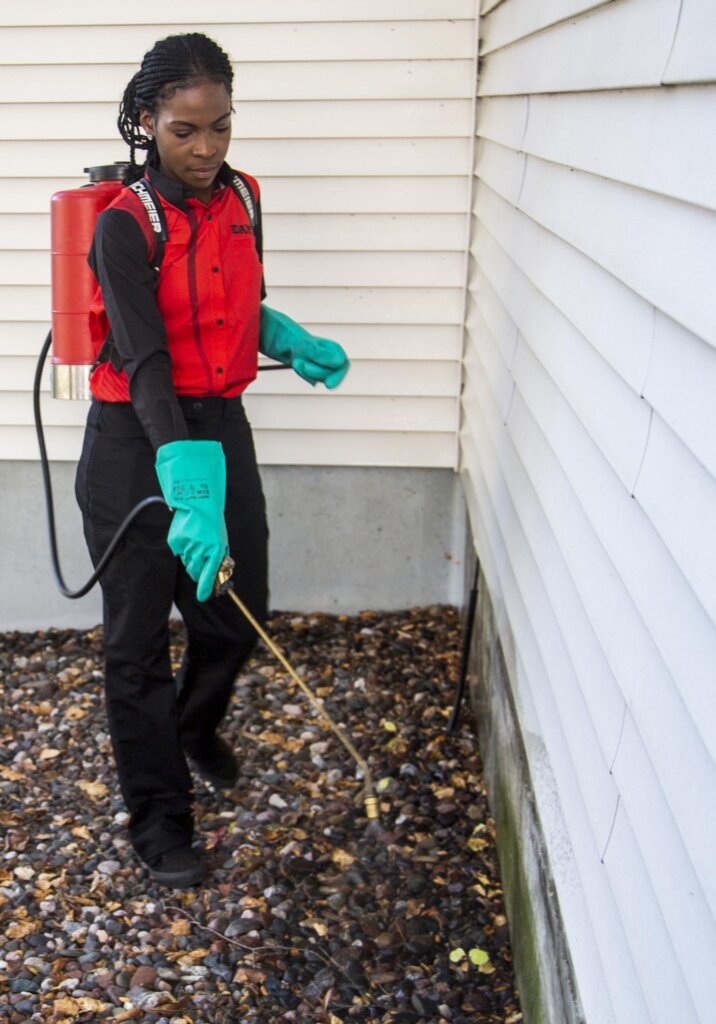Bed Bug Treatment Malfunction: Contrasting Chemical Vs. Non-Chemical Solutions
In the world of insect control, specifically when managing the consistent problem of bed pests, the selection between chemical and non-chemical therapy remedies can be a pivotal one. Both strategies supply distinct advantages and downsides, influencing aspects such as performance, security factors to consider, and overall expense. By taking a look at the nuanced details of each technique, a more clear understanding of which path to go after in attending to a bed pest problem can be achieved.
Efficiency of Chemical Treatments
Chemical therapies for bed insect problems have actually been commonly acknowledged for their rapid and powerful efficiency in removing these pests. When taking into consideration the performance of chemical treatments, it is important to understand that they can supply a extensive and quick option to a bed insect problem.
In addition, chemical therapies have the advantage of providing residual effects, suggesting that they can proceed to eliminate bed insects even after the first application. This recurring action is especially valuable in combating any possible re-infestations. In addition, the quick activity of chemical treatments can bring alleviation to people encountering severe bed bug problems, allowing them to gain back control of their space rapidly.
Safety Worry About Chemical Solutions
One crucial facet that requires careful consideration when using chemical options for bed insect treatment is making certain the security of residents and the atmosphere. While chemical therapies can be reliable in eliminating bed insects, they may posture threats otherwise managed appropriately. Among the primary safety and security interest in chemical options is the possible damage they can trigger to human health. Exposure to specific chemicals utilized in bed insect therapies can bring about respiratory system problems, skin inflammation, or other damaging reactions, especially in individuals with pre-existing problems or sensitivities. In addition, inappropriate application or dosage of chemical pesticides can lead to toxic residues remaining in the cured area, posturing long-lasting health and wellness threats to passengers.
Moreover, the ecological impact of chemical solutions is another substantial consideration. Some chemicals made use of in bed bug treatments may be dangerous to beneficial bugs, wildlife, and environments if they leach into the soil or water supply. It is vital to use chemical therapies carefully, adhering to safety guidelines, and considering much less toxic alternatives to minimize these dangers and ensure the reliable and secure management of bed pest infestations.
Advantages of Non-Chemical Techniques
Taking into consideration the prospective safety and security concerns and environmental effect connected with chemical solutions for bed insect therapy, discovering non-chemical strategies provides an encouraging alternative with numerous unique benefits. Non-chemical treatments are ecologically friendly, as they do not contribute to air or water pollution, making them a sustainable option for bug control.
Furthermore, non-chemical remedies can be effective in targeting bed pests, including hard-to-reach areas where chemical treatments might not penetrate - A1 pest control charlotte nc bed bugs. Approaches such as warm therapy, vacuuming, steam cleansing, and mattress encasements offer extensive eradication without the usage of dangerous chemicals.
Limitations of Non-Chemical Treatments

Additionally, non-chemical therapies commonly require several applications to accomplish successful elimination. This can be taxing and might not always assure complete elimination of all bed insects and their eggs, specifically in hard-to-reach have a peek at these guys or surprise locations.
Additionally, the success of non-chemical therapies heavily relies on correct execution and thoroughness, which can be challenging for people without professional expertise. Poor application of non-chemical methods may cause insufficient obliteration, bring about consistent infestations and the demand for extra therapies.
For that reason, while non-chemical treatments have their benefits, it is important to recognize these constraints and consider them when figuring out the most reliable technique for handling bed pest infestations.
Cost Comparison: Chemical Vs. Non-Chemical Options
Offered the limitations connected with non-chemical treatments, a crucial facet to review in the context of bed insect administration is the cost contrast between chemical and non-chemical options. Chemical treatments usually include the application of pesticides by professionals, which can vary from $250 to $900 per space, depending upon the seriousness of the problem and the size of the area to be treated. In contrast, non-chemical therapies like warmth therapy or heavy steam can be extra costly, with expenses ranging from $1,000 to $6,000 for an entire home. While the first expense of chemical therapies may seem reduced, several treatments might be needed to totally eliminate the invasion, possibly increasing the overall price. On the other hand, non-chemical choices might provide a more environmentally friendly and lasting remedy, although they can be cost-prohibitive for some people. Eventually, when thinking about the expense of bed insect therapy alternatives, it is necessary to evaluate the upfront expenses versus the efficiency and lasting sustainability of the link chosen method.
Verdict

Thinking about the prospective safety concerns and environmental impact connected with chemical solutions for bed bug therapy, discovering non-chemical techniques presents an appealing option with numerous distinct advantages.Offered the constraints linked with non-chemical treatments, an important facet to assess in the context of bed bug monitoring is the price contrast in between chemical and non-chemical options. In contrast, non-chemical therapies like warmth therapy or heavy steam can be more pricey, with prices varying from $1,000 to $6,000 for a whole home. While the initial expense of chemical therapies might appear reduced, multiple treatments may go to this web-site be called for to fully eradicate the invasion, possibly raising the total expense.In conclusion, when contrasting chemical and non-chemical bed insect therapy choices, it is necessary to take into consideration effectiveness, safety, benefits, constraints, and expense.